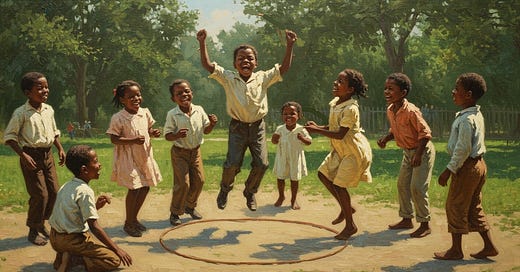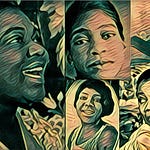If you were ever lucky enough to catch one of the late Dave Van Ronk’s shows, you almost certainly heard “Green Rocky Road,” which became sort of his theme song over the years.
He’d perform it in a variety of ways, sometimes at a lively clip, a tribute to its roots as a children’s play party tune. Other times it would be slow and meditative, making you wonder if you were missing some secret tucked away in those seemingly simple lyrics.
Dave’s tune inspired an eclectic slew of followers, ranging from Peter, Paul and Mary (as “Rocky Road” in 1963), Tim Hardin (1966) and Fred Neil (1967) to Ricky Nelson (as “Promenade in Green” in 1967), Wendy Waldman (1975) and Van Morrison (2023).
The Song’s Story
Van Ronk remembered first hearing the song from beat poet Bob Kaufman who was hanging out in Greenwich Village’s Gaslight Cafe in the early 1960s. Kaufman learned it as a child when he was growing up in New Orleans.
It was a popular African American children’s game song throughout the South, Kaufman said. In fact, the song is among those featured on a 1950 Folkways album called Ring Games: Line Games and Play Party Songs of Alabama, collected from the children of Lilly's Chapel School in York, Alabama, recorded by Harold Courlander.
Of the game associated with the song, the album notes said, “The children form a circle with the leader in the center. The group sings ‘Green, green’ and the leader answers, ‘Rocky road,’ skipping around the ring. As the chorus is sung the leader is deciding which person to choose. As he picks one, the group sings the first line of the verse, naming the child selected. The leader brings his choice to the center and kisses her…” (Hence, “Tell me who you love, tell me who you love.”)
Enter Len Chandler
But the song as we know it today was largely composed by Len Chandler, who was, as writer Elijah Wald notes, “one of the most musically sophisticated writers on the Village folk scene. Chandler had been a classical oboe player in Akron, Ohio, and Dave recalled Variety referring to him as ‘musician turned folksinger.’”
As Chandler always told it, Van Ronk was the first person to bring him down to Washington Square and introduce him around, and he shortly became the house musician at the Gaslight Cafe. Chandler came up with a new melody for the tune, Dave learned it from him, recorded it in 1963 and, for the rest of his life, it became one of the most enduring and requested songs in Dave’s repertoire.
Remembering Kaufman
But the real hero of this tale is Bob Kaufman, the poet who played a key role in preserving the song.
As composer/singer Richard A. Séguin recently commented in an online article, “Bob (Robert Garnell) Kaufman (1925-1986) once famously said ‘I want to be anonymous. My ambition is to be completely forgotten.’ I hope he will forgive me for disregarding his wishes, but he is too important an artist to forget.”
Choosing San Francisco for his home, Kaufman founded and edited Beatitude poetry magazine and many argue that it was he — rather than the often-credited newspaper columnist Herb Caen — who actually coined the term “beatnik.”
Wikipedia quotes writer Raymond Foye (from an introduction to a Kaufman poetry volume) as observing that Kaufman’s life was filled with a great deal of suffering.
In San Francisco, for instance, he was the target of beatings and harassment by the city police, while his years living in New York were filled with poverty, addiction and imprisonment. Kaufman often incurred the wrath of police simply for reciting his poetry aloud in public; it is said that in 1959 alone, he was arrested 39 times by the San Francisco cops on disorderly charges.
In 1963, he was arrested for walking on the grass of Washington Square Park. He was incarcerated on Rikers Island, then sent as a “behavioral problem” to Bellevue Psychiatric Hospital.
At Bellevue, Séguin notes, he “underwent electro-shock treatments that greatly affected his already bleak outlook on society.” After John F. Kennedy’s assassination, Kaufman, a Buddhist, took a vow of silence that lasted 10 years.
“Even though Bob Kaufman’s life was filled with a great deal of suffering,” Séguin concludes, “many will remember him for his wonderful idea that became the musical butterfly we know as ‘Green Rocky Road.’”




















Share this post